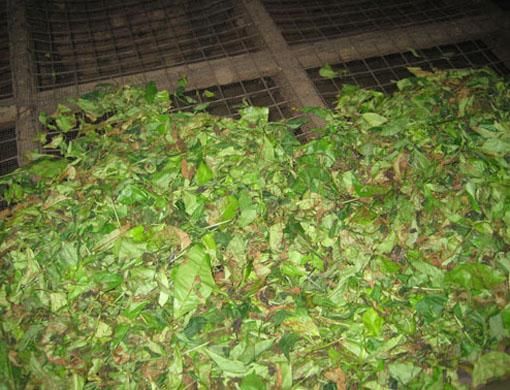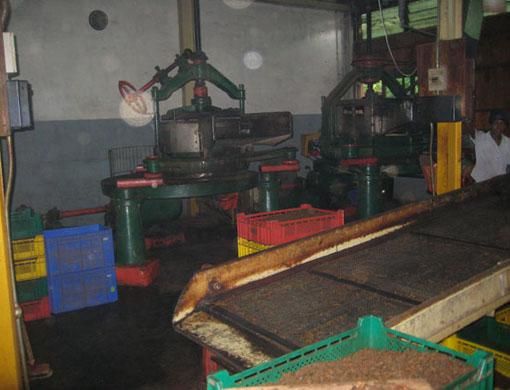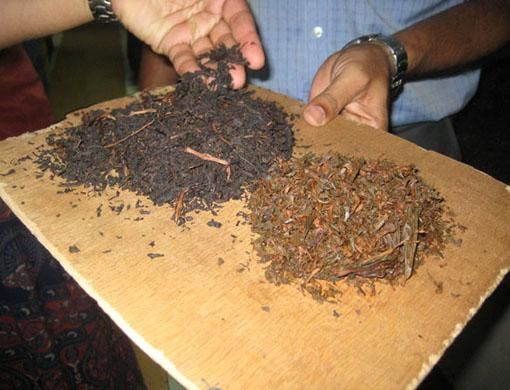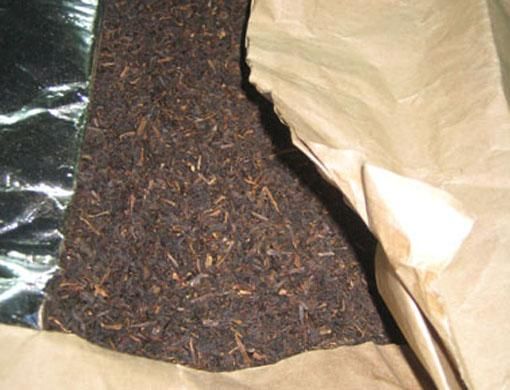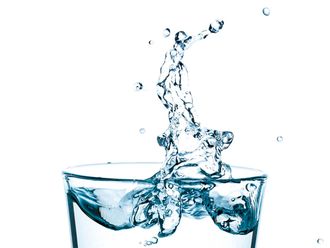I could smell it even before I stepped in through the door.
But that wasn't what grabbed me by the “nose''. It was the heat and the humidity and the claustrophobia that was clamping down on me as we moved in.
No, this was no scene from a horror flick. We were at the Embilmeegama Tea Factory in Kandy, Sri Lanka. A small affair but functional.
Coming back to the heat, the temperature needs to be kept high to help wilt and bruise the aromatic green tea leaves laid out on long trays.
Of course, this is only the first step in the process. Let's go on a journey into the making of that morning cuppa most of us can't do without.
Withering: You find yourself in a hot, airless room with rows of long wire-mesh trays with freshly picked tea leaves spread over them.
Hot air is forced over the leaves in order to reduce their water content. By the end of this process, the leaves become pliable enough to be rolled.
Rolling: The leaves are now twisted and rolled so their cells are broken up.
The leaves can be rolled with the help of machines or by hand.
Sometimes they are shaken and at others, they are passed under a roller to squeeze out their oils.
It is this oil, released during the process, that gives the tea its distinct aroma.
The juices released remain on the leaf, causing a chemical reaction that results in a change of colour.
Oxidation: This process, during which the tea leaves absorb oxygen, begins once the leaf membranes are broken down during the rolling process.
Oxidation causes the leaves to turn bright copper in colour and it is this process that determines whether the tea will be green, oolong or black.
Drying or firing: In this, the leaves are dried, evenly and thoroughly, without causing them to burn. Firing the leaves stops the oxidation process.
Sorting: The tea is then sorted into different categories and readied for packaging in air-tight bags.
Enjoy: There is nothing more refreshing than a hot cup of tea, especially when it's raining.
The process is used to make black tea. For oolong, however, instead of the process of rolling, the tea leaves are shaken to bruise the outer edges.
The oxidation period is only half of that required for black tea.
Once the veins on the leaves become clear and the edges reddish brown while the centre remains green, the oxidation process is stopped by firing.
Also, the tea leaves are heated at a higher temperature as this lowers the water content — which is not the case for black tea.
Thus, oolong tea can be stored for much longer than black tea.
The process for making green tea is the shortest. Withering is optional while rolling and oxidation are completely omitted.
After the tea leaves are withered, they are either pan-fried or fired — this is to prevent oxidation.
The leaves are then rolled and dried to give them shape.
Different types of tea
Camellia sinensis (not sinuses, it has nothing to do with the nose) is the species all kinds of tea, apart from the herbal ones, are derived from. There are four types of tea:
- White: White tea is the least known and least processed of the varieties and, therefore, tastes mostly like fresh leaves or grass. It also has the lowest amount of caffeine and is most likely to have the highest antioxidant properties.
- Green: Green tea, like white tea, is closer to tasting like fresh leaves or grass than the black or oolong variety. It is lower in caffeine and extremely popular for its high antioxidant properties.
- Black: Black tea is the most consumed of the four kinds of tea. It contains the highest amount of caffeine and has some antioxidant properties.
- Oolong: Oolong tea is the most difficult variety to process. The best way to describe it would be to say it is somewhere between green and black tea. This is because it is only partially oxidised during processing.
- Herbal: This is another popular form of tea. More often than not, it is a fusion of dried flowers and herbs.


